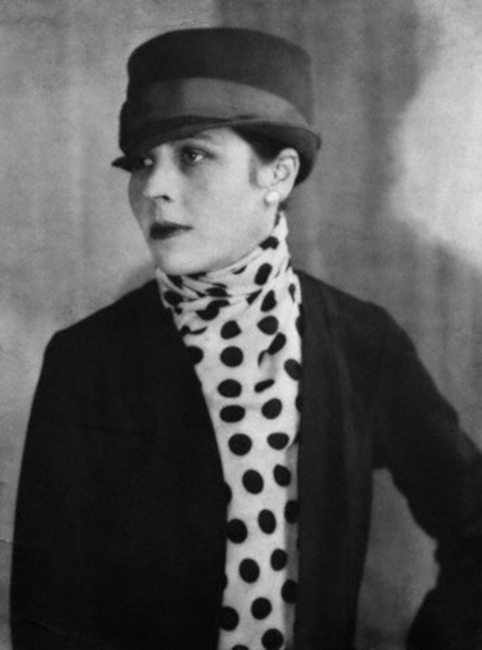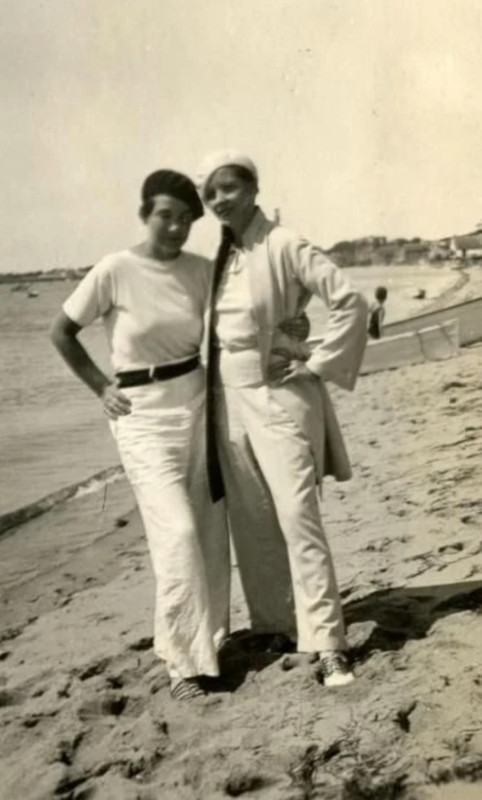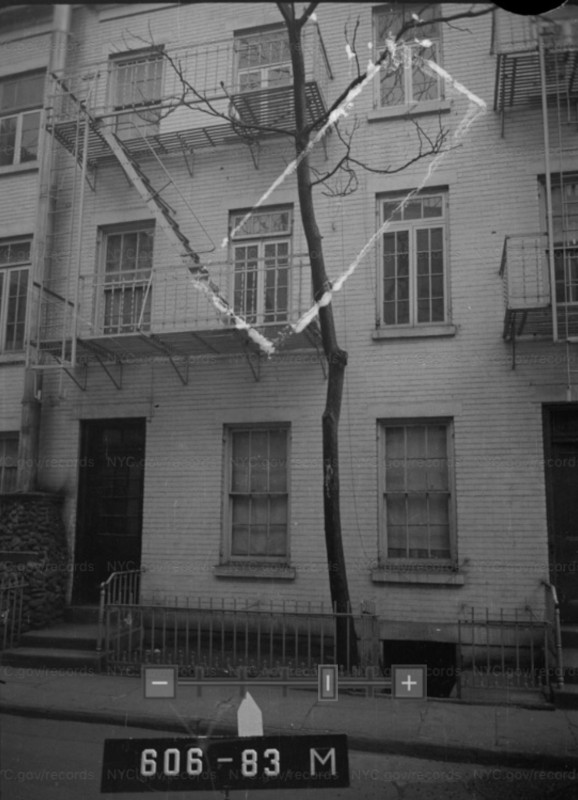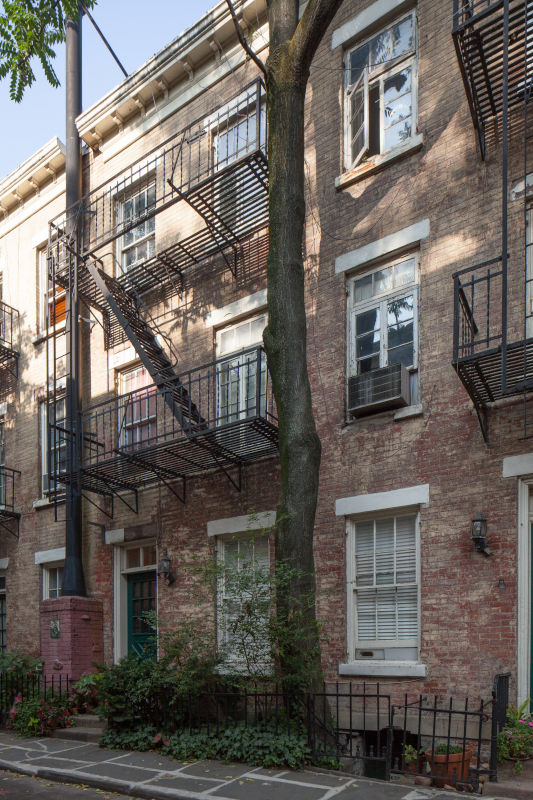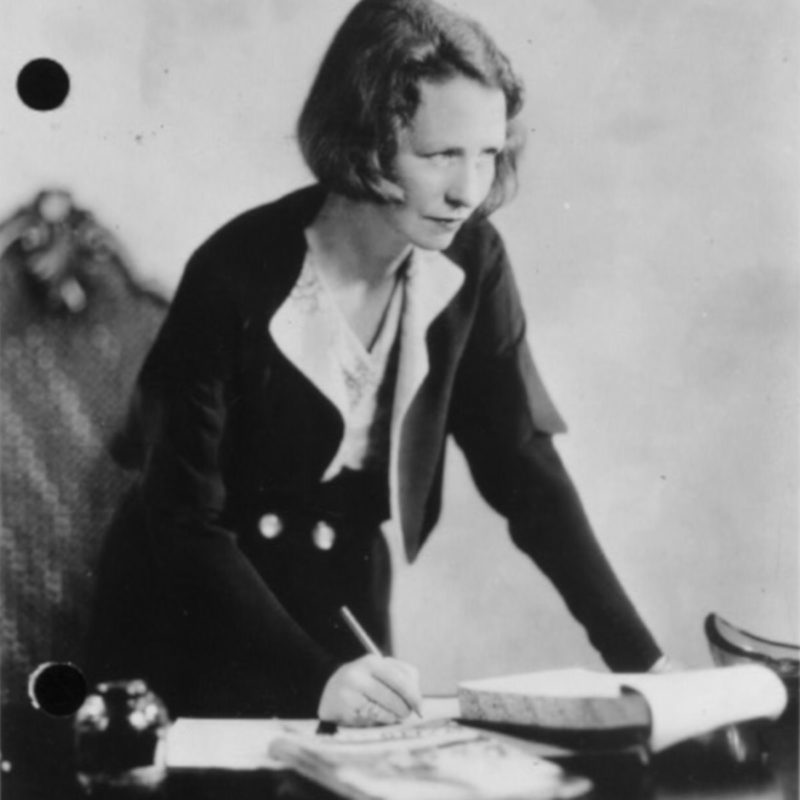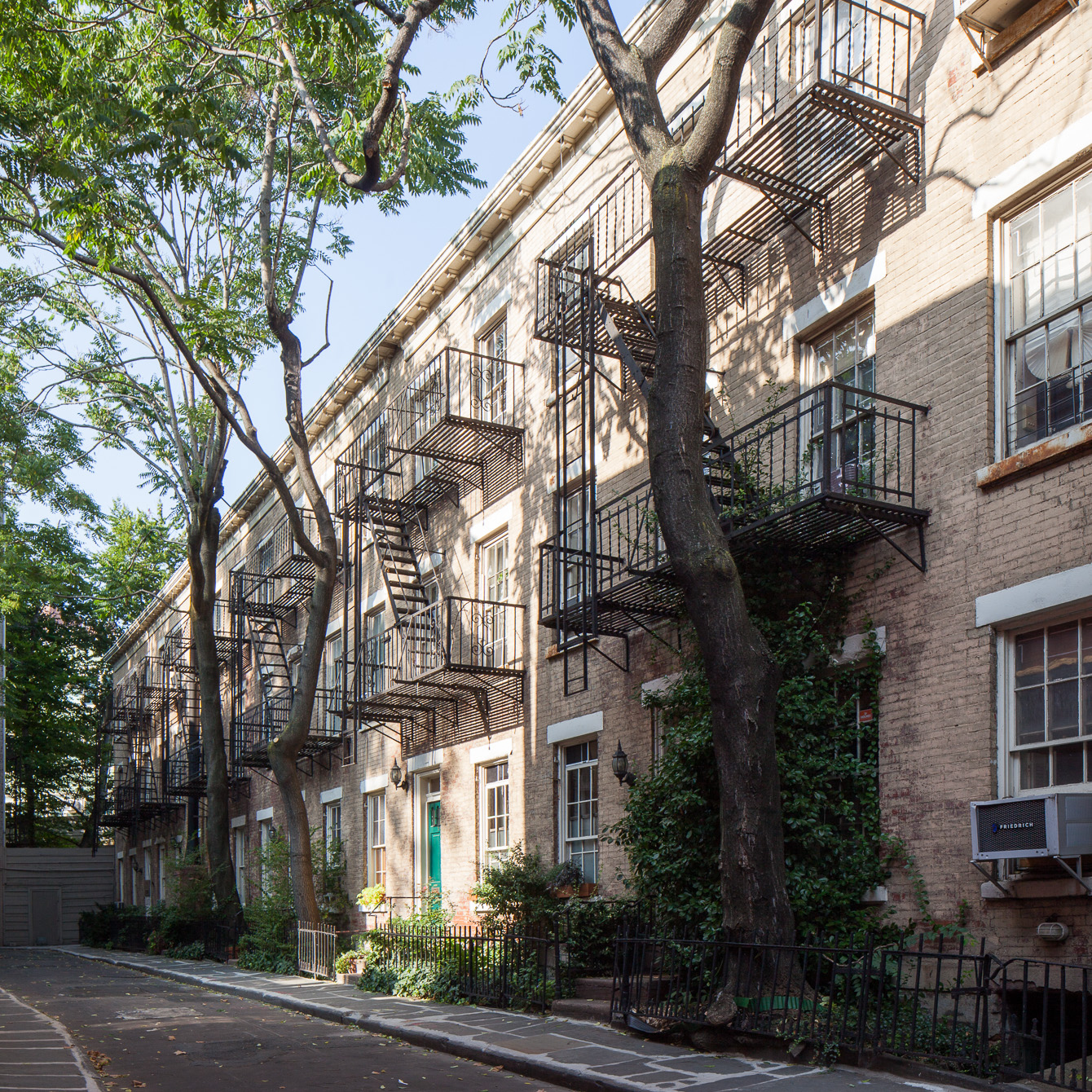
Djuna Barnes Residence
overview
Djuna Barnes was one of the first writers of lesbian literature, publishing three texts directly related to lesbianism, including Nightwood (1936), the first American novel that dealt frankly with the topic.
From 1940 until her death in 1982, Barnes lived a reclusive life in a one-room apartment at 5 Patchin Place.
History
Djuna Barnes (1892-1982) was an avant-garde writer and artist who published Nightwood (1936), the first American novel that dealt frankly with lesbian sexuality, as well as other texts related to the topic. She has been classified as a lesbian writer due to the subject of her work, her association with lesbian social circles, and her comment that “women were better in bed than men.” Given that she had relationships with men and women, most notably sculptor Thelma Wood, she has sometimes been categorized by people today as bisexual, though she herself disliked labels. Barnes denied being a lesbian and tried to distance herself from lesbian culture in her later years.
I am not a Lesbian, I just loved Thelma.
Barnes moved to New York City around 1912 with her mother and siblings after her father kicked them out. She studied at the Pratt Institute and Art Students League and worked as a journalist in order to pay her rent. She started associating with local literary figures and intentionally had herself imprisoned alongside other suffragists. From jail, she published experimental poems, drawings, and short stories in small magazines and newspapers, including The Little Review, owned by Margaret Anderson. Barnes published The Book of Repulsive Women, a collection of poems and drawings, in 1915. This book contained references to lesbian sex acts and lesbian-specific drawings, although the content was subtle enough to avoid censorship.
Barnes moved to Paris in the 1920s and joined the “Lost Generation” of expat American artists and writers. She began a relationship with Wood and became associated with Natalie Clifford Barney’s social circle of female and lesbian artists, including Peggy Guggenheim and Dorothy Wilde. Barnes published The Ladies Almanack in 1928 as a parody of Barney’s social circle. This book earned praise from Barney, but Barnes deliberately left her name off it due to the explicit lesbian content. Her relationship with Wood also ended in the late 1920s.
Barnes then moved into an English country manor with Guggenheim where she wrote Nightwood. Published in 1936, the novel centers on a failed relationship between two women, Robin Vote and Nora Flood. Vote and Flood are based loosely on Barnes and Wood, respectively. After seeing the portrayal of her character as selfish, Wood never spoke to Barnes again. Due to its depiction of sexuality between women, Nightwood is considered the first American novel to frankly portray lesbianism and an early example of lesbian literature.
Barnes returned to New York City in 1940 due to the outbreak of the Second World War, moving into a small, one-bedroom apartment at 5 Patchin Place in Greenwich Village where she lived alone for over forty years. The gated street was a known refuge for writers seeking peace and quiet within the city. Barnes became a recluse who published only one major work after returning to New York: The Antiphon (1958). E.E. Cummings, who lived across the street at No. 4, frequently yelled out his window, “Are you still alive, Djuna?” Although Barnes coined herself “the most famous unknown in the world,” she became an icon in the local lesbian community. Lesbians hid outside her street to catch a glimpse of Barnes on her daily walk. To Barnes’ great dismay, women affectionately named their nearby feminist bookstore Djuna Books after her. Barnes died at 5 Patchin Place at age ninety in 1982.
Entry by Emily Kahn, project consultant (August 2020).
NOTE: Names above in bold indicate LGBT people.
Building Information
- Architect or Builder: unknown
- Year Built: 1848
Sources
Bertha Harris, “Ancestral Dykes,” Gaysweek, no. 48 (1978), 5.
“Djuna Barnes Dies,” Gay Community News 4, no. 8 (1982), 17.
Dorene Internicola, “Djuna Barnes: The Most Famous Unknown Writer in the World,” New Directions for Women, September-October 1985, 16.
“Herstory: Djuna Barnes,” The Lesbian News 24, no. 6 (January 1999).
John Joseph, “Patchin Place,” Art Nerd New York, June 13, 2018, bit.ly/3hANIKM.
John Rosario, “Illustrious Obscurity,” Gay Community News 11, no. 5 (1983), 3, 7.
Liz Highleyman, “Who Was Djuna Barnes,” Seattle Gay News 33, no. 22, June 3, 2005, bit.ly/2OTG4ib. [source of pull quote]
Stephen Rutledge, “#BornThisDay: Lesbian Writer, Djuna Barnes,” The WOW Report, June 12, 2020, bit.ly/3f6oTot.
Suzanne Daley, “Djuna Barnes Dies; Poet and Novelist,” The New York Times, June 20, 1982, nyti.ms/2BtAjop.
Do you have more information about this site?
This project is enriched by your participation! Do you have your own images of this site? Or a story to share? Would you like to suggest a different historic site?
